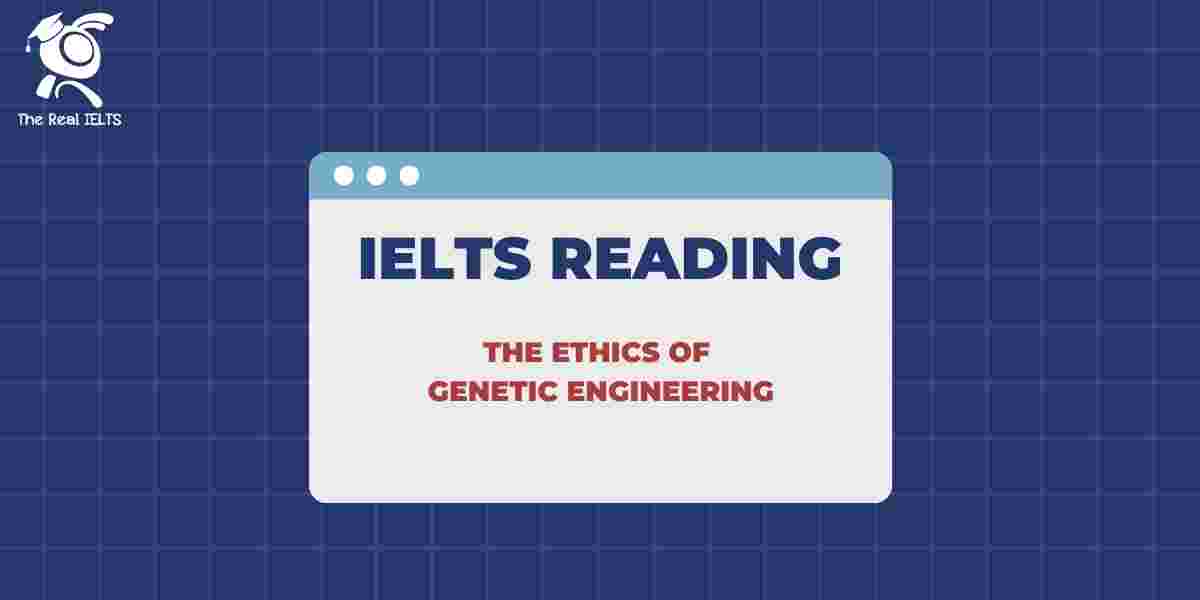Đề thi IELTS Reading có tiêu đề “The Rise of Electric Vehicles”
Nhớ đọc thêm các bài luyện thi IELTS nhé.
IELTS Reading: “The Rise of Electric Vehicles”
The Rise of Electric Vehicles
The dawn of the 21st century has witnessed a monumental shift in the global transportation landscape, with electric vehicles (EVs) emerging as a significant force reshaping the future of mobility. This transition, driven by technological advancements, environmental concerns, and evolving consumer preferences, marks a critical departure from the reliance on internal combustion engines (ICEs) that have dominated the automotive industry for over a century. The rise of electric vehicles not only promises to revolutionize the way we move but also carries profound implications for energy consumption, climate change, and urban infrastructure.
One of the primary catalysts for the rise of EVs is the growing awareness of environmental issues, particularly climate change. The transportation sector is a major contributor to greenhouse gas emissions, accounting for nearly a quarter of global CO2 emissions. Traditional gasoline and diesel-powered vehicles release harmful pollutants, such as nitrogen oxides and particulate matter, which degrade air quality and contribute to health problems.
As governments and organizations worldwide intensify their efforts to combat climate change, the push towards cleaner, more sustainable transportation solutions has become more urgent. Electric vehicles, with their zero tailpipe emissions, offer a promising alternative to reduce the carbon footprint of the transportation sector. Countries like Norway and the Netherlands have set ambitious targets to phase out the sale of new ICE vehicles within the next few decades, signaling a strong commitment to electrification.
The technological advancements in battery technology have also played a pivotal role in the proliferation of electric vehicles. Lithium-ion batteries, which power the majority of modern EVs, have seen substantial improvements in terms of energy density, cost, and durability. These enhancements have addressed one of the primary barriers to EV adoption: range anxiety.
Early electric vehicles were limited by their short driving range and lengthy charging times, making them less practical for long-distance travel. However, with the advent of more efficient batteries, modern EVs can now travel hundreds of kilometers on a single charge, rivaling or even surpassing the range of their gasoline counterparts. Moreover, rapid charging technology has evolved, allowing drivers to recharge their vehicles in a matter of minutes rather than hours, further enhancing the convenience and appeal of EVs.
In addition to environmental and technological factors, economic incentives have also spurred the rise of electric vehicles. Many governments offer generous subsidies, tax breaks, and other incentives to encourage consumers to make the switch from traditional ICE vehicles to electric ones. These financial incentives, coupled with the decreasing cost of EVs, have made them more accessible to a broader range of consumers.
In some regions, the total cost of ownership for an electric vehicle is now lower than that of a gasoline-powered car, when factoring in fuel savings, reduced maintenance costs, and government incentives. Furthermore, the ongoing investment in EV infrastructure, such as the expansion of charging networks, has alleviated concerns about the availability of charging stations, making EVs a more viable option for daily use.
The automotive industry’s response to the growing demand for electric vehicles has been swift and decisive. Major automakers, including Tesla, General Motors, Ford, and Volkswagen, have made significant investments in EV development, with some pledging to phase out the production of ICE vehicles altogether within the next few decades. Tesla, in particular, has been a trailblazer in the EV market, setting new standards for performance, design, and innovation. The company’s success has spurred competition among traditional automakers, leading to a surge in EV offerings across various market segments, from compact cars to luxury sedans and even electric trucks.
However, the rise of electric vehicles is not without its challenges. One of the most pressing issues is the environmental impact of battery production and disposal. The extraction of raw materials, such as lithium, cobalt, and nickel, required for EV batteries, has raised concerns about the sustainability and ethical implications of mining practices. Additionally, the recycling of used batteries poses a significant challenge, as the current infrastructure for battery disposal and reuse is still in its infancy. As the number of electric vehicles on the road continues to grow, addressing these environmental concerns will be crucial to ensuring that the transition to electric mobility is truly sustainable.
Another challenge lies in the energy grid’s ability to accommodate the increased demand for electricity as more consumers adopt EVs. While electric vehicles themselves produce zero emissions, the electricity used to charge them is often generated from fossil fuels, particularly in regions where renewable energy sources are not yet widely available. To fully realize the environmental benefits of EVs, it is essential that the electricity grid transitions towards cleaner, renewable energy sources, such as solar, wind, and hydropower. Governments and utility companies will need to invest in modernizing and expanding the energy grid to support the widespread adoption of EVs while minimizing their carbon footprint.
Despite these challenges, the future of electric vehicles appears bright. The global market for EVs is expected to grow exponentially in the coming years, driven by continued advancements in technology, supportive government policies, and changing consumer attitudes. The rise of autonomous vehicles, which are expected to be predominantly electric, will further accelerate this trend, transforming the way people travel and reshaping urban landscapes.
In conclusion, the rise of electric vehicles represents a paradigm shift in the automotive industry and the broader transportation sector. As society moves towards a more sustainable and environmentally conscious future, electric vehicles will play a central role in reducing greenhouse gas emissions, improving air quality, and lessening our dependence on fossil fuels. While challenges remain, the momentum behind electric vehicles is undeniable, and their widespread adoption will undoubtedly have far-reaching impacts on the economy, the environment, and the way we live.
Đề bài thi IELTS Reading
Multiple Choice Questions
- What is one of the main reasons for the rise of electric vehicles? A. Decreasing fuel prices
B. Increasing interest in luxury cars
C. Growing environmental concerns
D. Lack of government regulations - What is the primary advantage of electric vehicles over gasoline-powered vehicles? A. Lower initial cost
B. Zero tailpipe emissions
C. Faster refueling times
D. Higher top speeds - What advancement helped address “range anxiety” for electric vehicle owners?
A. Improved battery efficiency
B. More government incentives
C. Reduced EV prices
D. Increased availability of gasoline - Which of the following companies is mentioned as a leader in electric vehicle innovation?
A. Ford
B. General Motors
C. Tesla
D. Toyota - What is one challenge that electric vehicle production faces?
A. Lack of consumer interest
B. High greenhouse gas emissions
C. Environmental impact of battery production
D. Insufficient governmental support - What type of energy is suggested as necessary for reducing EV carbon footprints?
A. Nuclear power
B. Renewable energy
C. Coal-powered energy
D. Natural gas - Which of the following is NOT a benefit of electric vehicles mentioned in the text?
A. Improved air quality
B. Lower long-term maintenance costs
C. Faster manufacturing processes
D. Reduced greenhouse gas emissions - What is one reason governments promote electric vehicle adoption?
A. To increase fuel prices
B. To decrease urban congestion
C. To meet climate change goals
D. To promote luxury car brands - Which technological improvement has made electric vehicles more practical for daily use?
A. Solar-powered engines
B. Longer battery life
C. Increased fuel efficiency
D. Automated driving features - Which challenge related to electric vehicles is NOT mentioned in the passage?
A. Availability of charging stations
B. High insurance premiums
C. Mining of raw materials
D. Disposal of used batteries
True/False/Not Given Questions
- Tesla was the first company to develop electric vehicles.
True / False / Not Given - Electric vehicles are now cheaper to produce than gasoline-powered cars.
True / False / Not Given - Norway aims to stop selling new ICE vehicles by 2025.
True / False / Not Given - Charging an electric vehicle takes longer than refueling a gasoline-powered car.
True / False / Not Given - The transportation sector is the largest contributor to global CO2 emissions.
True / False / Not Given - Electric vehicles have zero environmental impact.
True / False / Not Given - The price of lithium-ion batteries has increased significantly in recent years.
True / False / Not Given - Some automakers plan to completely stop producing gasoline-powered vehicles.
True / False / Not Given - Mining practices for EV batteries have raised concerns about ethics and sustainability.
True / False / Not Given - Governments are not investing in electric vehicle infrastructure.
True / False / Not Given
Yes/No/Not Given Questions (Author’s Opinion)
- The author believes electric vehicles are the only solution to climate change.
Yes / No / Not Given - The author suggests that consumer attitudes are shifting in favor of electric vehicles.
Yes / No / Not Given - The author is optimistic about the future of electric vehicles.
Yes / No / Not Given - The author feels that the current battery technology for EVs is sufficient.
Yes / No / Not Given - The author supports the use of fossil fuels to generate electricity for EVs.
Yes / No / Not Given
Matching Headings
Match the following headings to the correct paragraphs:
- Heading A: Environmental Benefits of Electric Vehicles
- Heading B: Technological Breakthroughs in Battery Efficiency
- Heading C: Challenges in Electric Vehicle Adoption
- Heading D: The Future of Transportation and Electric Vehicles
Matching Features
Match the following features to the corresponding topic discussed in the passage:
- Tesla –
A. Government regulations
B. Leading innovation in electric vehicles
C. Battery production
D. Fossil fuel use - Norway –
A. Pioneering electric vehicle manufacturing
B. Offering subsidies for EVs
C. Setting ambitious EV adoption targets
D. Leading in the development of charging networks - Lithium-ion Batteries –
A. Affordable manufacturing
B. Environmental challenges
C. High energy efficiency
D. Low durability
Sentence Completion
- Electric vehicles are becoming more popular due to ___________.
- Modern electric vehicles can now travel ___________ on a single charge.
- Governments offer financial incentives to ___________.
- One challenge for electric vehicles is the environmental impact of ___________.
Summary Completion
Fill in the blanks based on the passage summary:
- Electric vehicles are rising in popularity due to their ___________ emissions and the growing concerns about ___________. Advances in ___________ technology have improved their range and reduced ___________.
- Governments around the world are promoting EV adoption through ___________ and infrastructure investment, which includes expanding ___________ stations.
Short Answer Questions
What do some countries aim to phase out by the middle of the century to encourage the growth of electric vehicles?
E. are reducing the cost of space travel
What is one technological advancement that has helped electric vehicles overcome range anxiety?
Đáp án bài thi IELTS Reading
Multiple Choice Questions
- C. Growing environmental concerns
- B. Zero tailpipe emissions
- A. Improved battery efficiency
- C. Tesla
- C. Environmental impact of battery production
- B. Renewable energy
- C. Faster manufacturing processes
- C. To meet climate change goals
- B. Longer battery life
- B. High insurance premiums
True/False/Not Given Questions
- False
- Not Given
- True
- True
- False
- False
- False
- True
- True
- False
Yes/No/Not Given Questions (Author’s Opinion)
- No
- Yes
- Yes
- Not Given
- No
Matching Headings
- A. Environmental Benefits of Electric Vehicles
- B. Technological Breakthroughs in Battery Efficiency
- C. Challenges in Electric Vehicle Adoption
- D. The Future of Transportation and Electric Vehicles
Matching Features
- B. Leading innovation in electric vehicles
- C. Setting ambitious EV adoption targets
- B. Environmental challenges
Sentence Completion
- growing environmental concerns
- hundreds of kilometers
- encourage consumers to buy electric vehicles
- battery production and disposal
Summary Completion
- zero / climate change / battery / charging time
- subsidies / charging
Short Answer Questions
- Improved battery technology (Lithium-ion batteries)
- The sale of new internal combustion engine (ICE) vehicles
Luyện tập bài khác ở bài viết:”100 bài luyện IELTS Reading 2024 – 2025“















